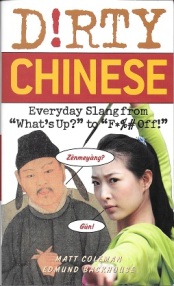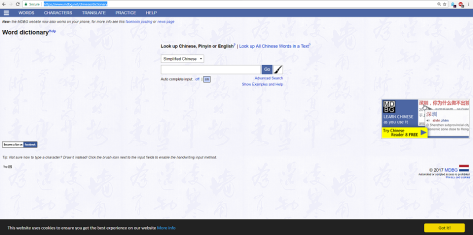Whether you are learning for school, for travel, for work, or for fun, it is easy to get lost in the sheer amount of information and tools available to the average Mandarin student. Because of this, it may be hard to select the best, and students often end up pouring hours into researching sources instead of the actual materials! To facilitate this process, I have compiled a list of textbooks, audio CDs, and other study sources in alphabetical order. Each item will have a small synopsis and any pertinent information, including if it is recommended and what level Mandarin speaker you should be before obtaining.
~~~
Chinese for Economics and Trade

Published by Sinolingua, this small but excellent textbook was designed simultaneously with CCTV’s 26 episode series Chinese for Economics and Trade. The textbook is focused on intermediate to advanced students of Chinese language who want to focus primarily on vocabulary and grammar associated with economics. Each lesson begins with a written text that is written in both Chinese and Pinyin, followed by the English translation. A word list for studying is also provided, as well as explanations for key phrases and sentences. Following this are a handful of very useful cultural and language notes associated with the text. Each chapter ends with exercises for further practice.
While I have not seen the TV series, I find the book to be incredibly useful. It is on the difficult side, so anyone below HSK 4 level should probably steer clear. However, those who wish to use Chinese in a business setting will find this textbook incredibly invaluable.
~~~
Dirty Chinese

Not one for the kids, this tongue-and-cheek book is actually full of surprisingly fun and useful phrases. Organized by topic and activity, the book provides what many textbooks lack: everyday slang and terminology. You will learn how to order food, how to hang out with friends and ask for things, and learn how to flirt with the best of them in China. It also includes activities often not found in textbooks, such as listening to specific types of music, telling someone the food is terrible, and playing video games in Chinese. Again, this one is for +18 years of age due to mature content, but it is highly recommended for everyday learning. Do not visit a Chinese chatroom without this book!
~~~
Integrated Chinese

The Integrated Chinese series was utilized by my professors in college, and to this day, I still use them for review. The textbooks are separated by level, which each level containing two parts, for a total of 20 lessons per level. Each lesson is separated into two readings, which have associated word lists, grammar, practice questions and activities, and cultural notes. Level 1 is written with purely simplified Chinese; however, later levels utilize both simplified and traditional characters.
There are two elements to this series that make it incredibly useful to students. The first is that it is very hands-on in terms of engaging students. Each lesson has a clear objective, a defined list of words and phrases, and a mixture of easy to difficult practices for students to use both in and outside of class. Like all textbooks, students take from it what they put in, but Integrated Chinese makes the process appear less daunting and, indeed, quite logical. The grammatical structures in particular are explained without boggling down students with needless information, and examples are provided to show how the structures can be used in different ways.
The second element is the fact that there is an associated website, called yellowbridges.com, which contains all of the vocabulary lists in the textbooks and applies it to a flashcard-based system. Students can therefore practice outside of the textbook through this online resource, providing them with more opportunities and ways to study. It isn’t for everyone, but for many students, flashcards are a great way to pick up language, and for this textbook series, the system has already been made!
Depending on your fluency in Chinese, it may be best to pick up Level 1 and work from there. The series is great for reviewing the basics and practicing vocabulary, and you may be inspired to learn new vocabulary outside the textbook in order to utilize the grammatical structures taught within.
~~~
Lonely Planet: Mandarin Audio Pack

Lonely Planet is one of the best sources I have come across during my language studies. Containing both a phrasebook and an audio CD for practice, Lonely Planet: Mandarin covers a wide variety of topics, ranging from simple pronunciation and grammar to doctor visits, playing golf, and ordering food. The phrasebook is packed full of very specific terms, such as “heavy metal music,” “environmentalism,” “ping pong tournament,” and “student ticket,” giving students a plethora of options when learning key sentence structures. The CD covers several sentence structures and phrases from each chapter but focuses on beginner and intermediate phrases. The only downside is that it goes out of order in the phrasebook, which is divided based on activity and subject matter, meaning students will be jumping around if they plan to follow along.
This is highly recommended for those both self-studying Chinese and those currently taking beginner to immediate courses.
~~~
Mdbg.net : Online Dictionary

Mdbg.net is one of the best online dictionaries for Chinese language learners. Providing translations in both Simplified and Traditional characters, the website offers users several methods in which to find a translation. These include simply searching for a word to selecting radicals contained within the characters being searched. Idioms are included in the online dictionary, and oftentimes, the site will provide numerous words and phrases to one entry, giving users an idea of which word would be correct. An example of this is the word “to call,” which has as its first three translations the words for “to shout/call,” “to hang up the phone,” and “to sing.” Once selected, a word will be separated into its contained characters, and users can watch short clips depicting how each character is written as well as which radicals are included in the character. Another excellent tool is the *, which you can place before or after a character to see what other words contain the character. If you plug 说* (shuo1 *) into the translator, it will show you all the words that have “shuo1” in the front. Very useful when you’re trying to remember words!
The only downside to this website is that it is often picky with English words. Descriptors, or phrases that have more than one word but are not idioms, are often misread or simply not translated. For instance, you cannot search the phrase “art museum.” You would have to search either “art” or “museum” and scroll through the list of words until you come across the one you are looking for. While this can be annoying, this is the only negative I have encountered with the website, and it is easy to work around. Overall, the website is intuitive and offers many useful ways in which to search for pesky Chinese characters or phrases.